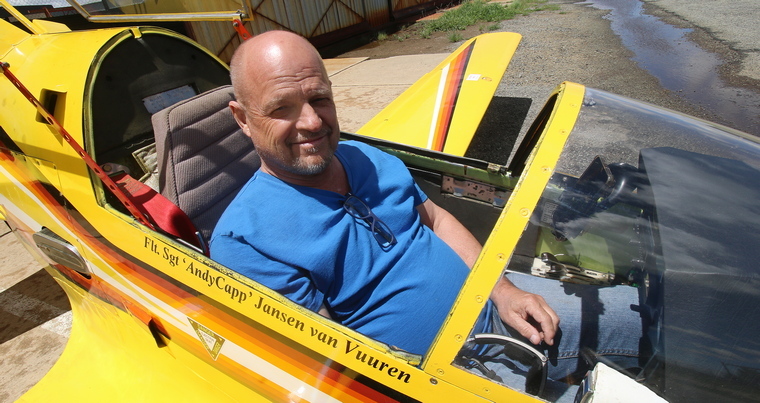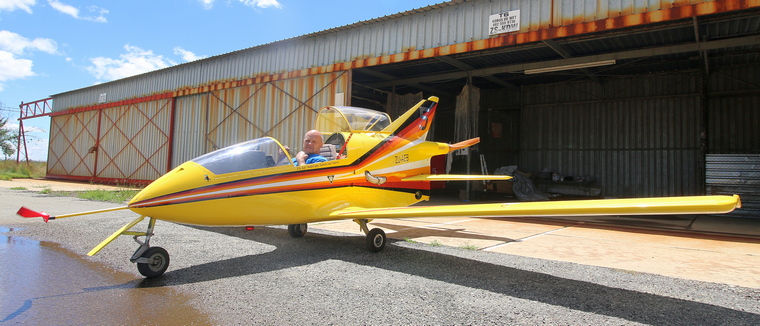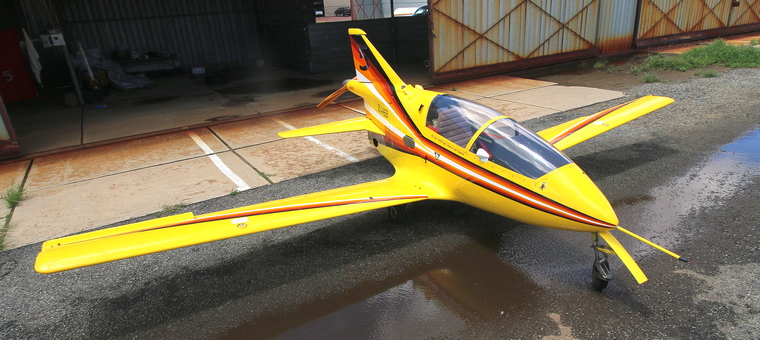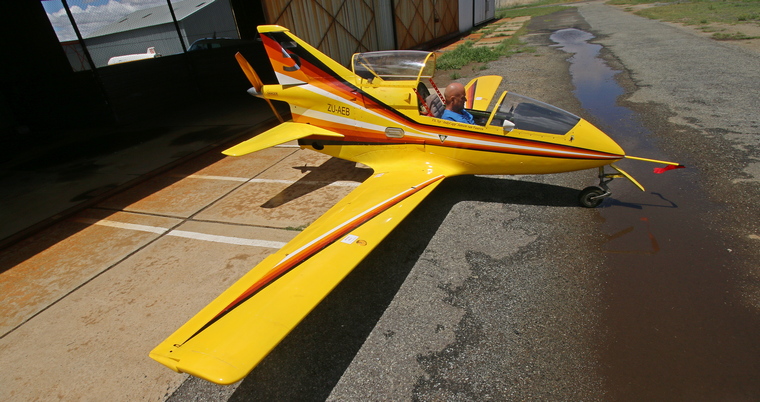A BD 5 - a pretty little gem at Welkom Airport
By Andy van Vuuren
2022.06.19
Google Banner Ad

Photo by Willie Bodenstein
The Bede Aircraft Corporation was founded by aeronautical engineer Jim Bede in Cleveland in 1961 to produce the BD-1 kit aircraft, which eventually became the American Aviation Corporation's AA-1. The company also created and produced a number of advanced kit planes including the famous Bede BD-5 (pusher propeller driven) and BD-5J (turbojet driven). The BD-5J has held the Guinness record as the World's Smallest Jet Aircraft for more than a quarter century.
Just a short history on my BD before I managed to purchase and fly it.

Photo by Willie Bodenstein
My BD was built from a kit by Keith Tudhope who started around 1991 when the first airframe inspection was done. Keith is a design engineer and did excellent work in the construction of the plane.
The aircraft's maiden flight was on 7 March 1993. Many tests on exhausts, props, ect followed till the aircraft is where it is at the moment.
The BD was flown to the total of 108 hours and was sold to a buyer in Durban. I am not sure how long this owner was in possession of her but heard that because of the BD's reputation his family refused him to fly the aircraft.
She was then sold to a Corne, (surname unfortunately not known) in Mosselbaai. Corne, after he had an incident in his Rotax 582 powered Bushbaby due to an engine failure, he was planning to fit an electric motor into the BD. Glad he did not. He never flew the BD.

Photo by Willie Bodenstein
I am not sure how long he had her but he did start the engine regularly which pushed the hours up to 119. This was when I bought her from him in 2020. She has removable wings which makes it easy to transport and I trailered her from Stilbaai where the seller relocated to from Mosselbaai.
I repainted her in her present livery. Everything was still in airworthy condition but I found that when I did high speed taxi tests that the brakes were very weak. I then bought a set of Matco brakes as well as aluminum undercarriage struts, the same that the jet guys use in USA. The brakes now work perfectly. The prop was refurbished by Piet de Necker, the original prop maker. In the log books it was noticed that a lot of different props were tried and tested but the De Necker prop still worked the best. All the fuel lines were replaced, the fuel gauges refitted, the radio was repaired, and the wheel tracking as well as weight and balance was done. The BD only has a three-inch window on the weight and balance. Quite tricky to get it correct.

Photo by Willie Bodenstein
All the previous owners, except the builder, did not have the logbooks for her. I managed to connect with the friendly original builder /pilot and got the books from him. This allowed me to apply and successfully got her an Authority to Fly issued. I have a total of 6 hours flight time on the her at present.
The BD takes off at 70 mph. Takes a bit of getting used to as she is six inches from the ground and gives the sensation that she is going faster than she really is. The trick is to keep the tail plane level. Only slight pullback is needed when she gets light on the wheels. Trying to pull back on the tail plane earlier causes a little drag being that the tail plane is 'full floating 'and a large area. Once in the air the undercarriage is pulled up and then the trim is set for climb at 6600rpm/ 600-800ft per/min.

Photo by Willie Bodenstein
Normal procedures from then on. The BD has very little inertia and attention must be given when changing throttle or attitude as the air speed can decrease quickly.


Cruise is at 145/150 mph @ 6200rpm. The cockpit is comfortable and I am planning a cross country flight soon.
Landing is straight forward once you have become used to the low riding height from the ground. The plan is a 100-mph approach (30-degree flaps) and 90 mph over the fence. On the ground steering is done by differential braking on the main wheels.

The BD has a side stick and is very easy to fly. I am a low time pilot and have no problem flying her. Pitch is mostly done by small changes on the trim. The plane responds very well to inputs. They say that the BD is more difficult to take-off than land due to the high thrust from the rear engine pushing the nose down. I think I will agree to that.
Google Banner Ad

|
        |























